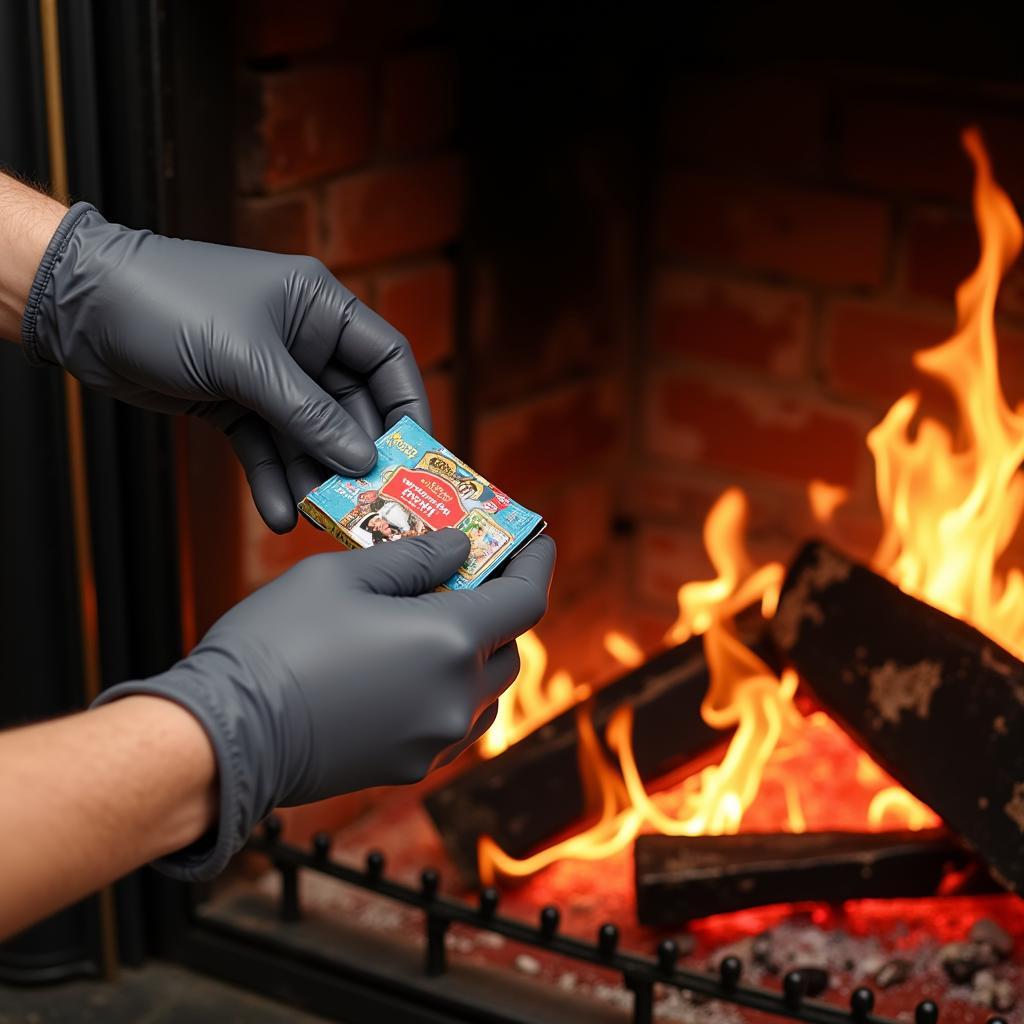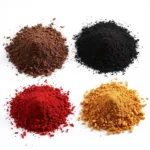Creating vibrant, colorful flames is a fascinating pursuit, whether for a cozy fireplace, a dramatic campfire, or a scientific experiment. Understanding how to make different colored fire involves knowing a little bit of chemistry and following some safety precautions. Let’s delve into the world of colorful flames and discover how to achieve these mesmerizing effects. You might be surprised at how easy it is to transform ordinary flames into a spectrum of vibrant hues.
Different chemicals emit specific wavelengths of light when burned, resulting in different colors. By carefully introducing these chemicals into a fire, you can control the color of the flames. It’s important to note, however, that safety should always be your primary concern. These chemicals can be hazardous if mishandled. Always wear appropriate safety gear and work in a well-ventilated area. If you are interested in other ways to add color, learn how to make colored clay slip.
The Science Behind Colored Fire
The color we see in a flame is determined by the energy released by electrons within the atoms of the burning material. When heated, these electrons jump to higher energy levels and then fall back down, releasing energy as light. The specific wavelength of this light corresponds to a particular color.
Chemicals for Creating Colored Flames
Creating Red Flames
Strontium salts, commonly found in road flares, produce a vibrant red flame. You can find strontium chloride in some fireworks stores. Be sure to follow all safety instructions when using strontium chloride.
Creating Orange Flames
Calcium chloride will produce an orange flame. This is readily available in many hardware stores, often used as a desiccant.
Creating Yellow Flames
Sodium, a common element, produces a bright yellow flame. Ordinary table salt (sodium chloride) is a readily available source for this.
Creating Green Flames
For a vibrant green flame, copper compounds are your best bet. Copper sulfate, often used as an algaecide, is a good option.
Creating Blue Flames
Copper chloride produces a beautiful blue flame. This is less commonly available than copper sulfate but can often be found at chemical supply stores.
Creating Violet Flames
Potassium chloride, a common fertilizer ingredient, will produce a delicate violet or lilac-colored flame.
How to Safely Color Fire
The safest and easiest way to add color to your fire is by using pre-made color packets specifically designed for fireplaces or campfires. These are readily available and come with detailed instructions. For other color techniques, see how to make the color brown with clay.
If you’re working with chemical powders, avoid directly sprinkling them onto an open flame as this can create uncontrolled bursts of color and potentially be dangerous. Instead, dissolve the chemical in water and soak a porous material like pinecones, sawdust, or rolled-up newspaper in the solution. Allow these to dry completely before carefully adding them to the fire.
How Do I Make Different Colors Flames for a Fireplace?
For fireplaces, stick with commercially available color packets or logs. These are designed for safe use in enclosed environments.
What Precautions Should I Take When Making Colored Fire?
Always wear safety goggles, gloves, and work in a well-ventilated area when handling chemicals. Never leave a colored fire unattended. Want to explore other colorful effects? Learn about how to make different color flames.
 Safely Adding Color Packets to a Fire
Safely Adding Color Packets to a Fire
Different Colored Fire: Tips and Tricks
- Start small: Begin with a small amount of the chemical to test the color and intensity.
- Dry materials thoroughly: Ensure any soaked materials are completely dry before adding them to the fire.
- Use natural materials: Pine cones, sawdust, and wood chips are ideal for absorbing the chemical solutions.
- Avoid inhaling smoke: Even with relatively safe chemicals, inhaling the smoke can be irritating.
- Dispose of materials properly: Do not pour leftover chemical solutions down the drain. Consult local regulations for proper disposal.
“When working with chemicals to create colored fire, remember that safety is paramount. Always follow proper safety procedures and use caution.” – Dr. Anya Sharma, Chemical Engineer.
Conclusion
Learning how to make different colored fire can add a touch of magic and excitement to any fire-related gathering. By understanding the underlying science and following safety precautions, you can safely create a mesmerizing display of vibrant flames. Remember, proper handling and disposal of chemicals are crucial for a safe and enjoyable experience. For creating colored smoke effects, check out how to make colored smoke with dry ice and how to make dry ice smoke colored.
FAQ
- Is it safe to make colored fire at home? Yes, provided you follow safety guidelines and use appropriate materials.
- Where can I purchase chemicals for colored fire? Chemical supply stores, fireworks stores, and online retailers.
- What should I do if I accidentally inhale the smoke? Move to fresh air immediately and seek medical advice if necessary.
- Can I use these techniques in a fireplace? It’s best to use commercially available color packets or logs designed for fireplaces.
- What’s the best way to dispose of leftover chemicals? Consult local regulations for proper chemical disposal guidelines.
- How can I make a bright blue fire? Copper chloride is the chemical responsible for producing blue flames.
- Are there any natural ways to make colored fire? Driftwood can sometimes produce bluish-purple flames due to the presence of certain salts.
Need help creating colorful spaces? Contact us at 0373298888, email [email protected], or visit us at 86 Cầu Giấy, Hà Nội. Our 24/7 customer support team is ready to assist you.

